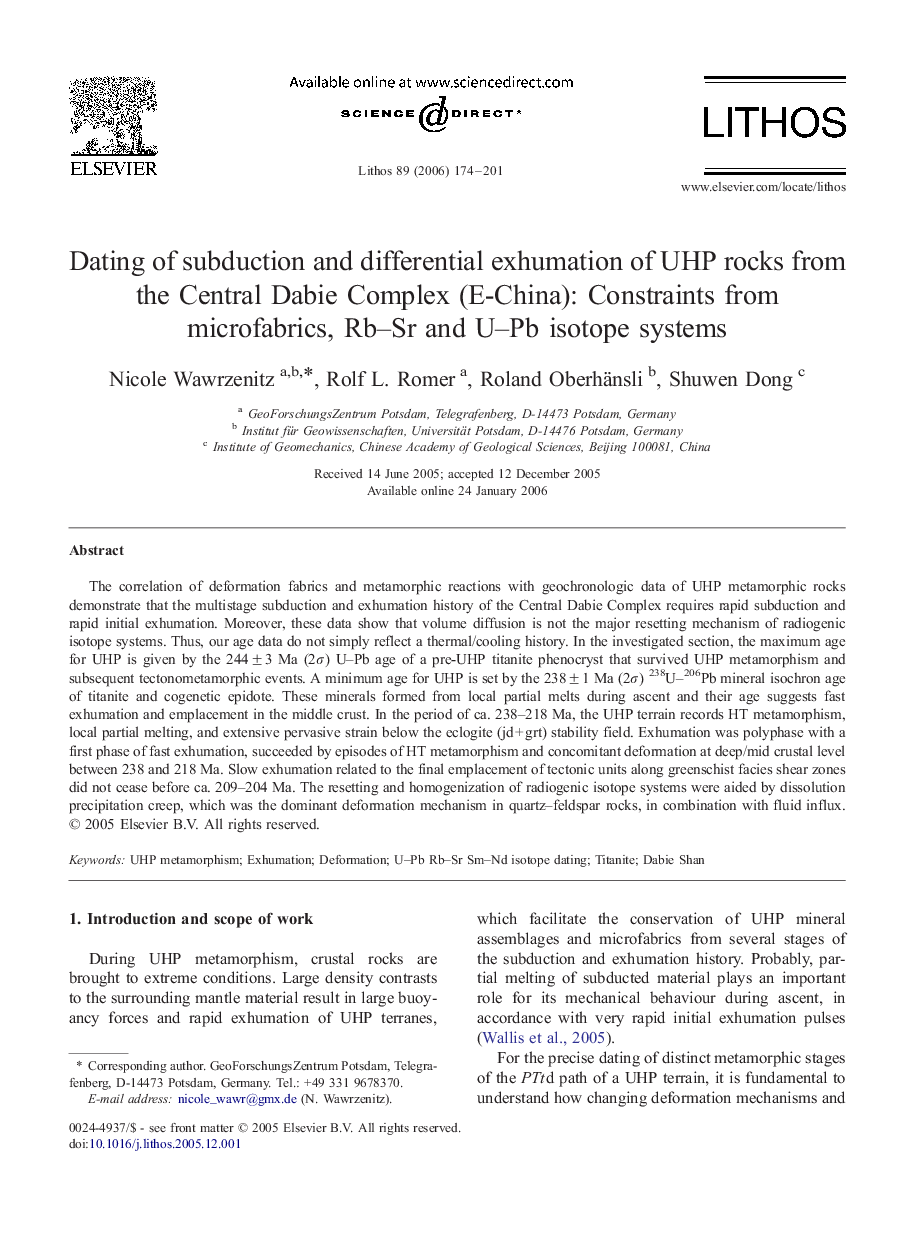| کد مقاله | کد نشریه | سال انتشار | مقاله انگلیسی | نسخه تمام متن |
|---|---|---|---|---|
| 4717969 | 1638780 | 2006 | 28 صفحه PDF | دانلود رایگان |

The correlation of deformation fabrics and metamorphic reactions with geochronologic data of UHP metamorphic rocks demonstrate that the multistage subduction and exhumation history of the Central Dabie Complex requires rapid subduction and rapid initial exhumation. Moreover, these data show that volume diffusion is not the major resetting mechanism of radiogenic isotope systems. Thus, our age data do not simply reflect a thermal/cooling history. In the investigated section, the maximum age for UHP is given by the 244 ± 3 Ma (2σ) U–Pb age of a pre-UHP titanite phenocryst that survived UHP metamorphism and subsequent tectonometamorphic events. A minimum age for UHP is set by the 238 ± 1 Ma (2σ) 238U–206Pb mineral isochron age of titanite and cogenetic epidote. These minerals formed from local partial melts during ascent and their age suggests fast exhumation and emplacement in the middle crust. In the period of ca. 238–218 Ma, the UHP terrain records HT metamorphism, local partial melting, and extensive pervasive strain below the eclogite (jd + grt) stability field. Exhumation was polyphase with a first phase of fast exhumation, succeeded by episodes of HT metamorphism and concomitant deformation at deep/mid crustal level between 238 and 218 Ma. Slow exhumation related to the final emplacement of tectonic units along greenschist facies shear zones did not cease before ca. 209–204 Ma. The resetting and homogenization of radiogenic isotope systems were aided by dissolution precipitation creep, which was the dominant deformation mechanism in quartz–feldspar rocks, in combination with fluid influx.
Journal: Lithos - Volume 89, Issues 1–2, June 2006, Pages 174–201